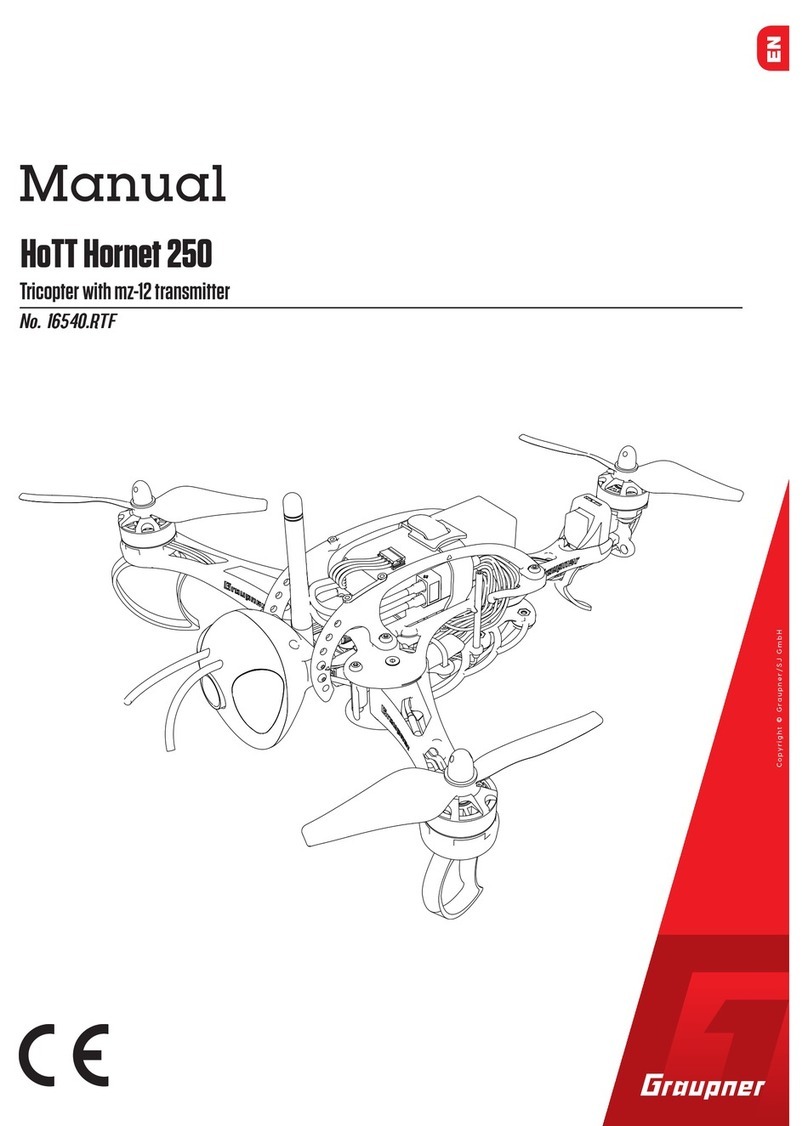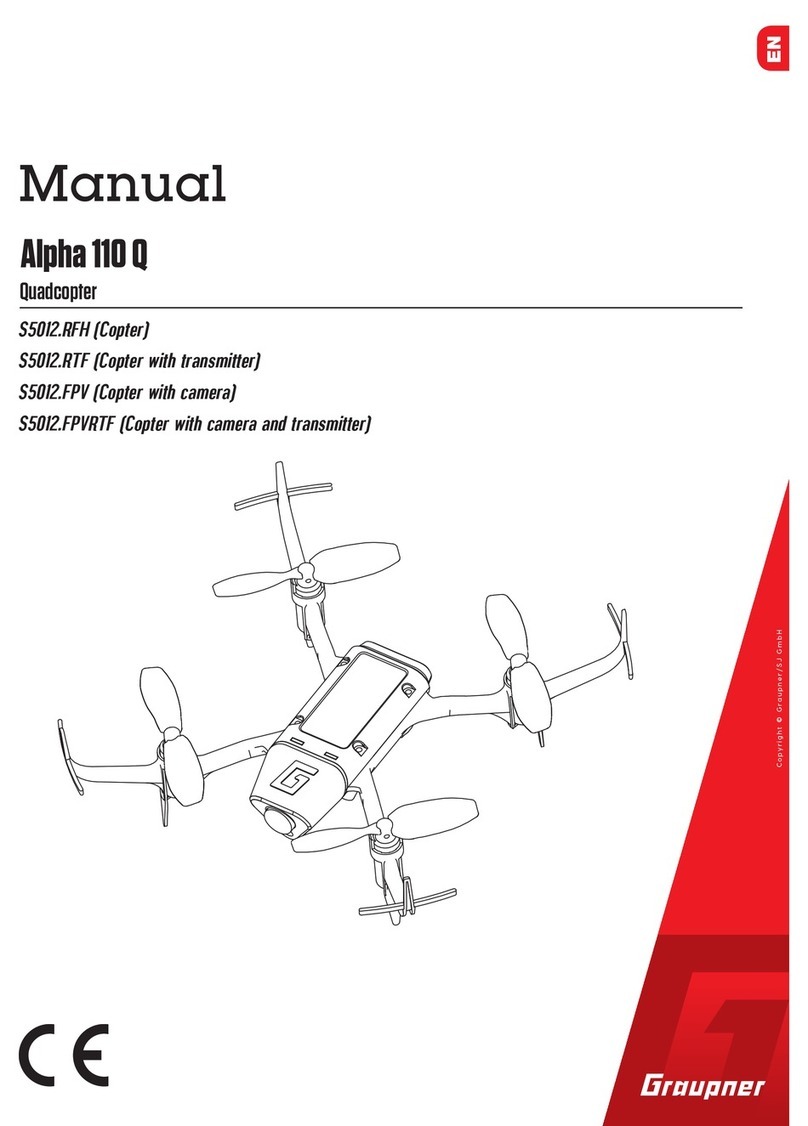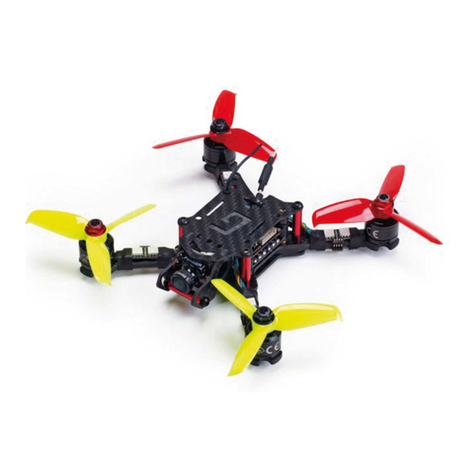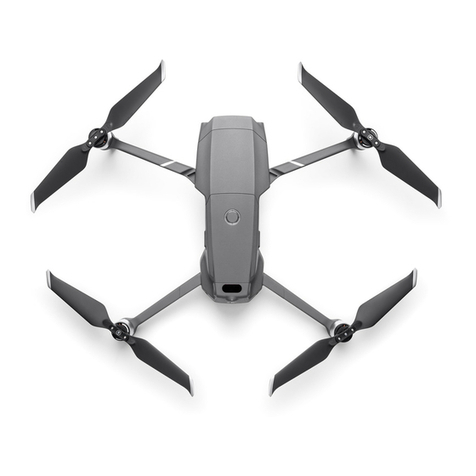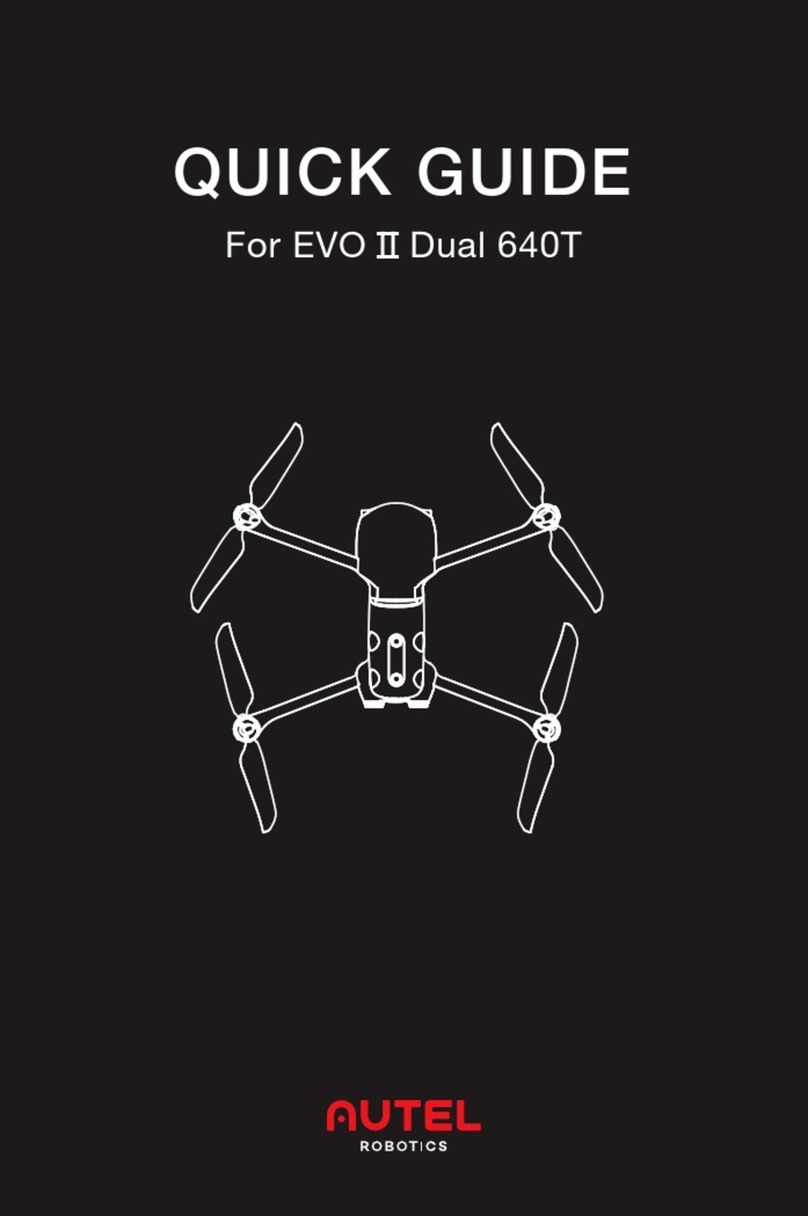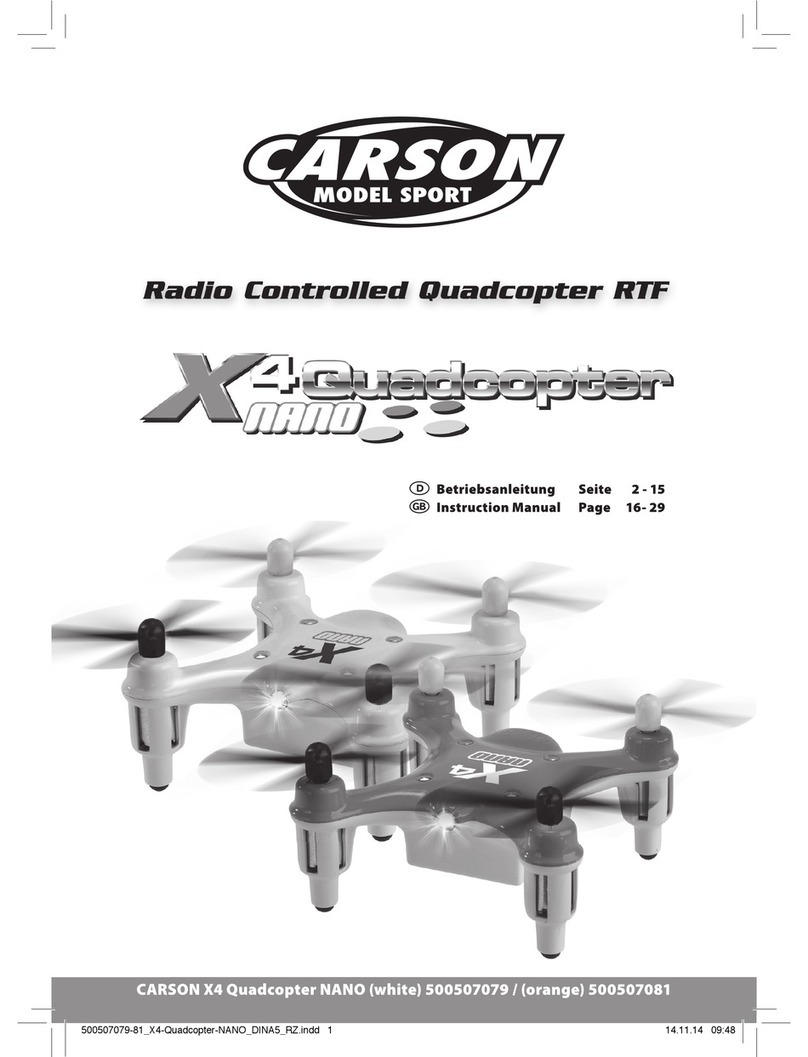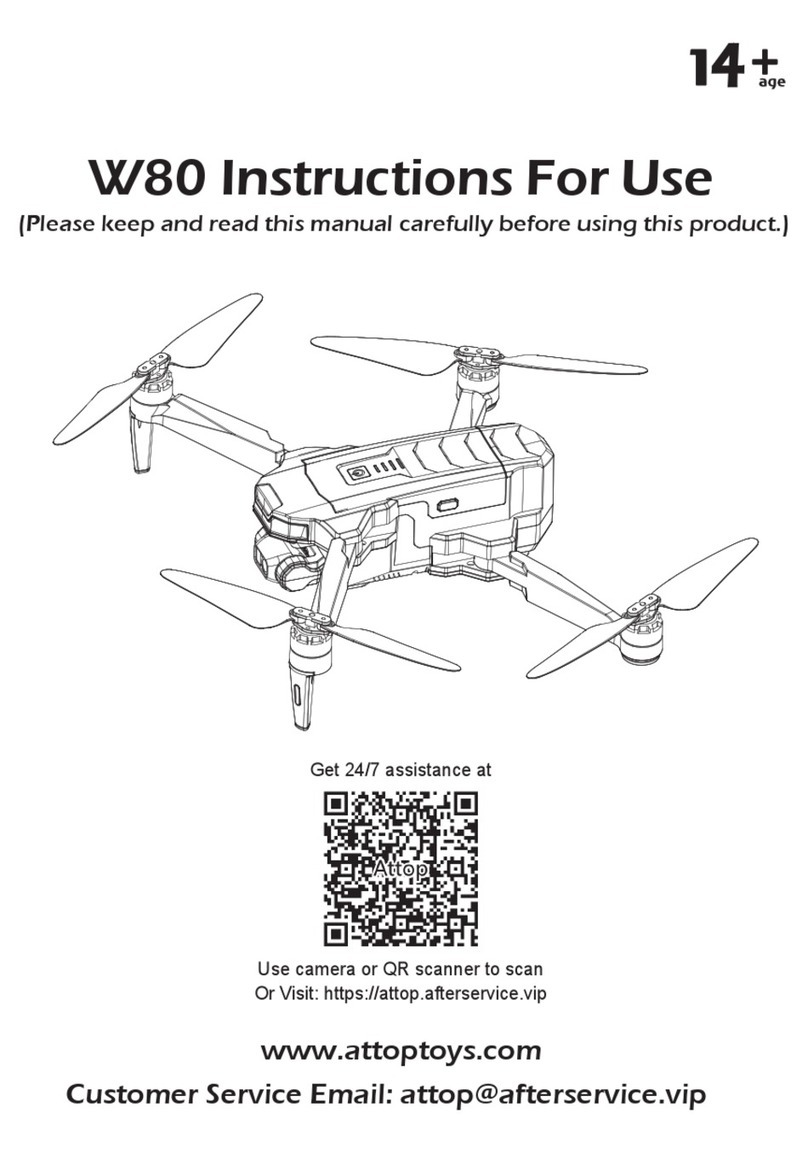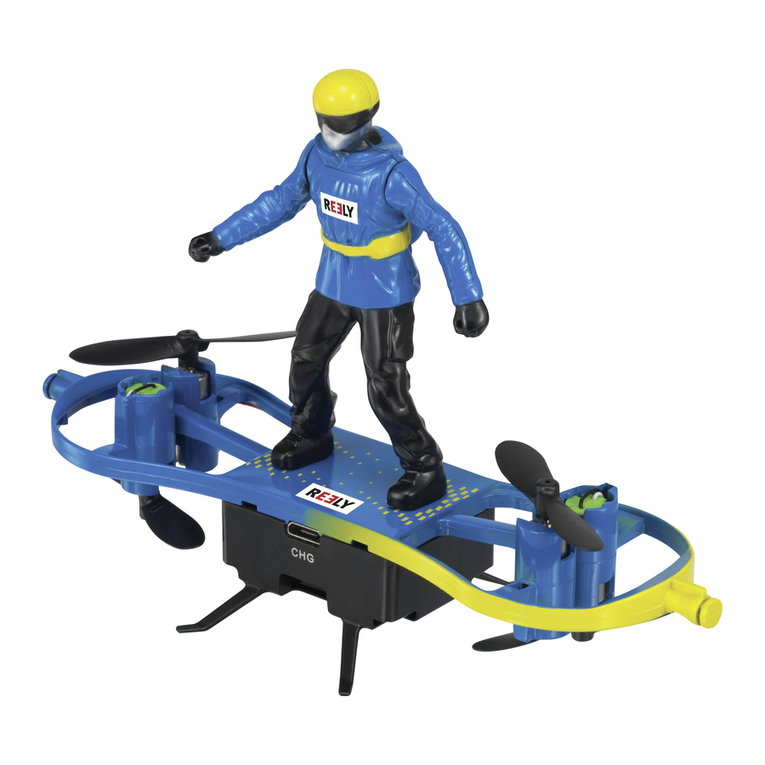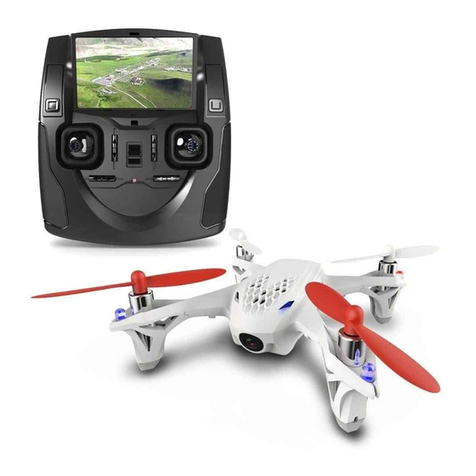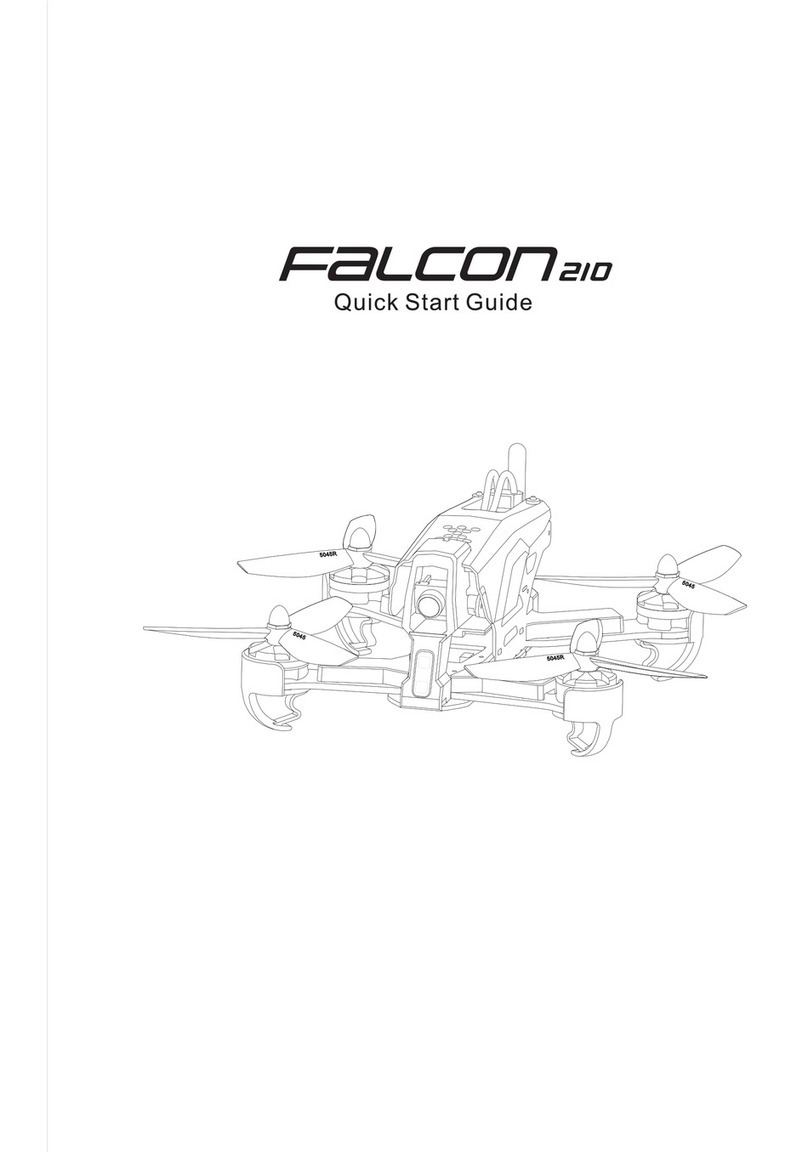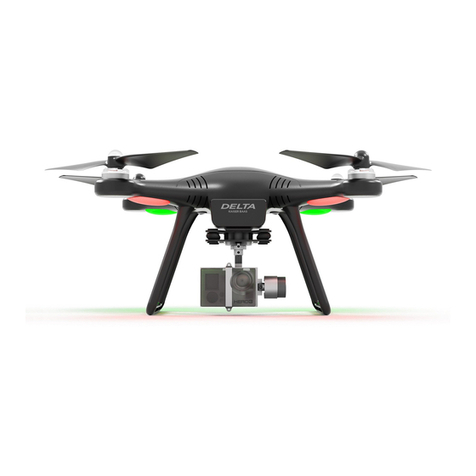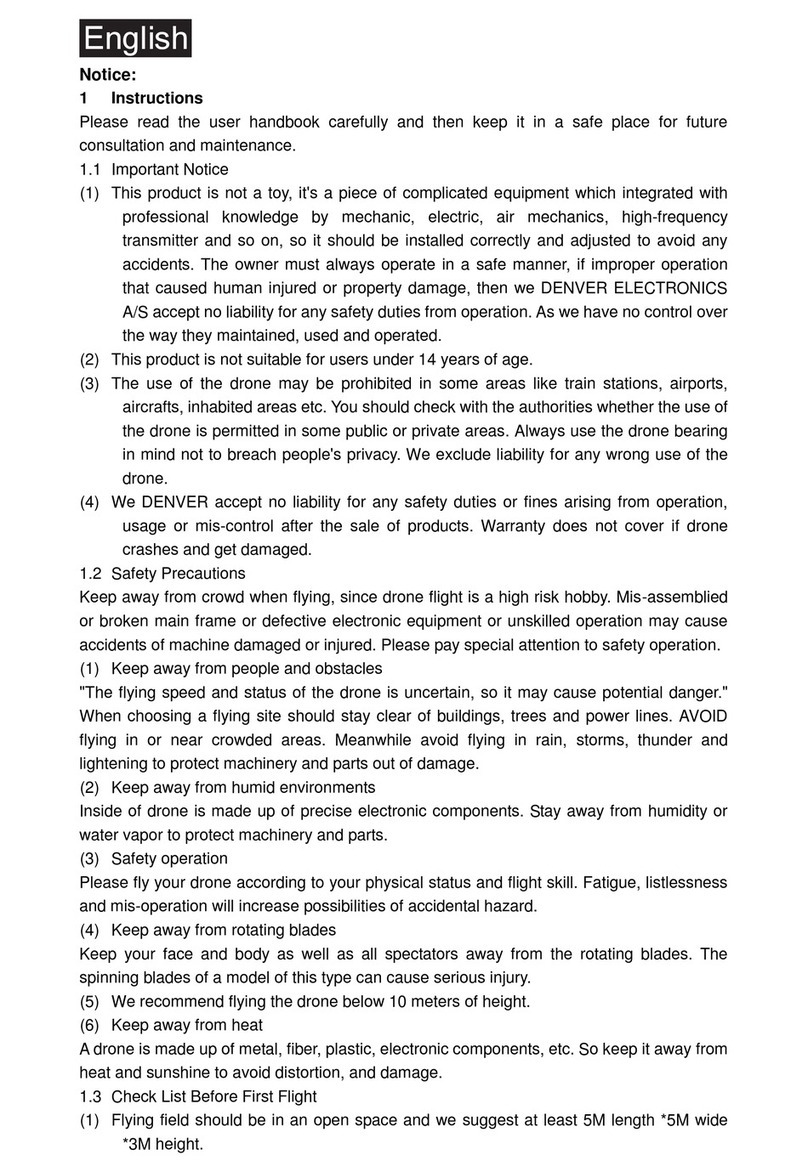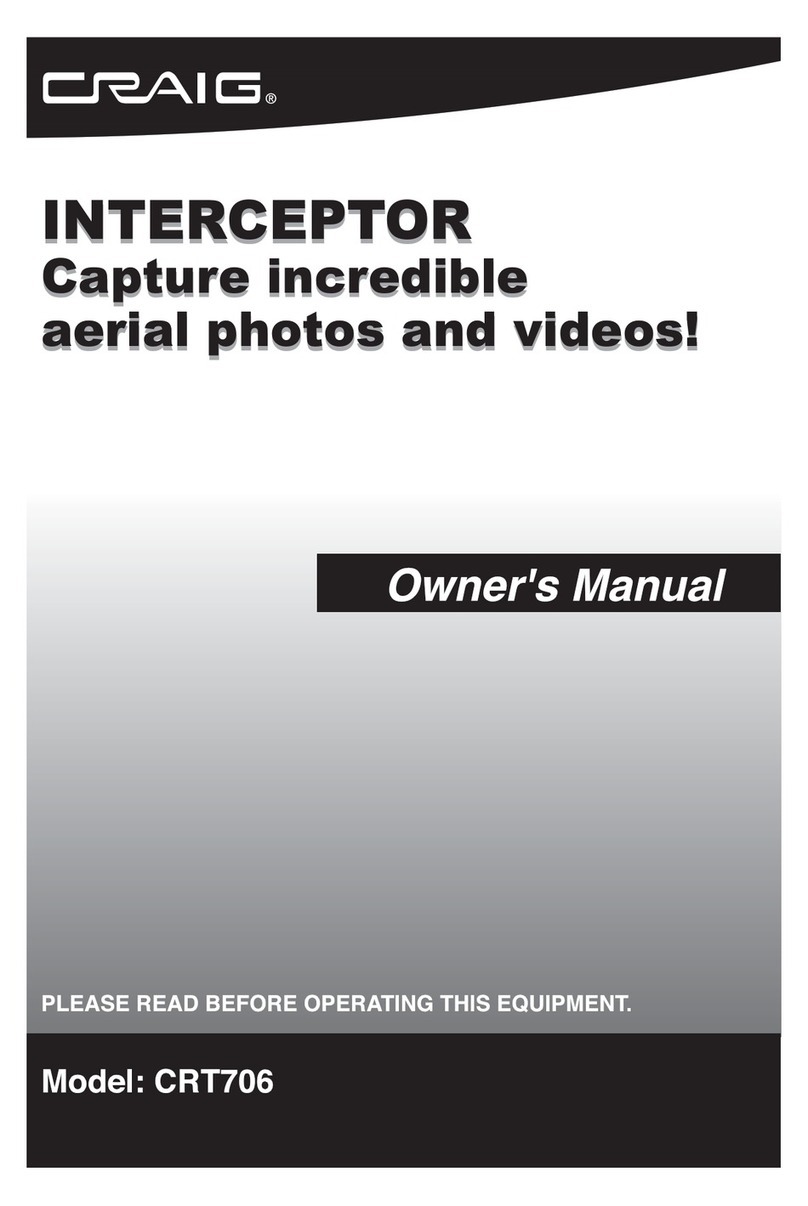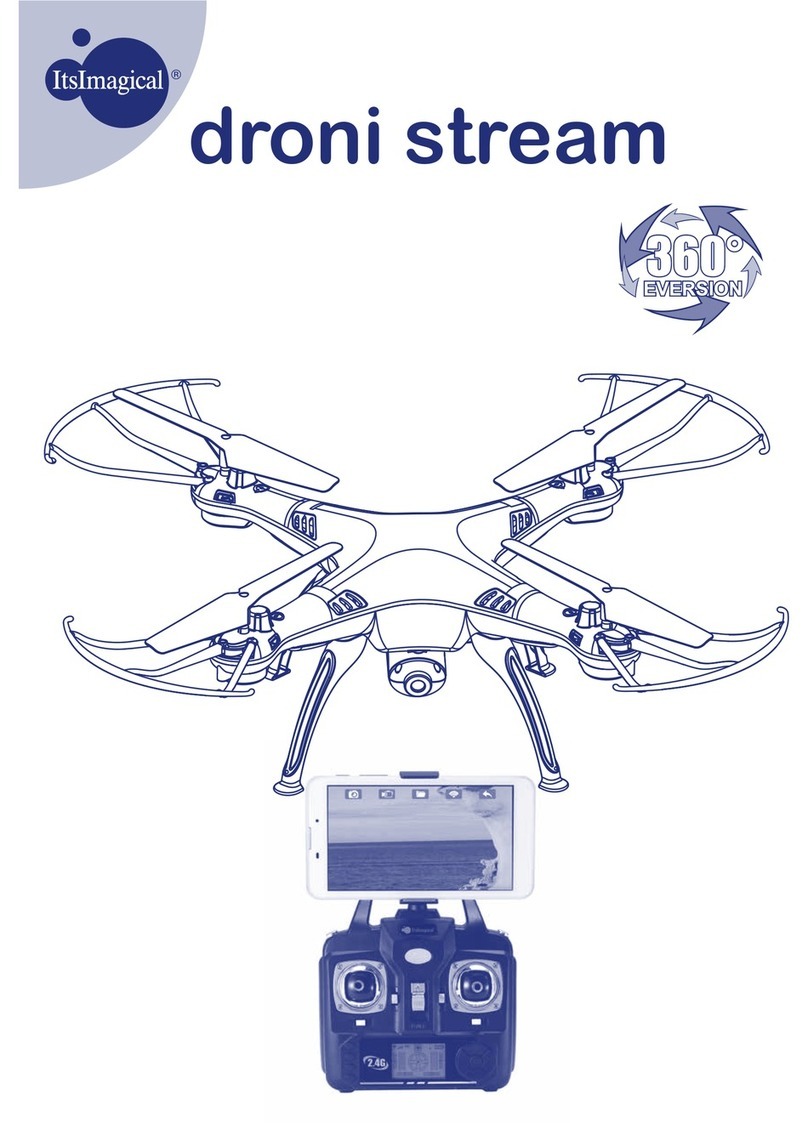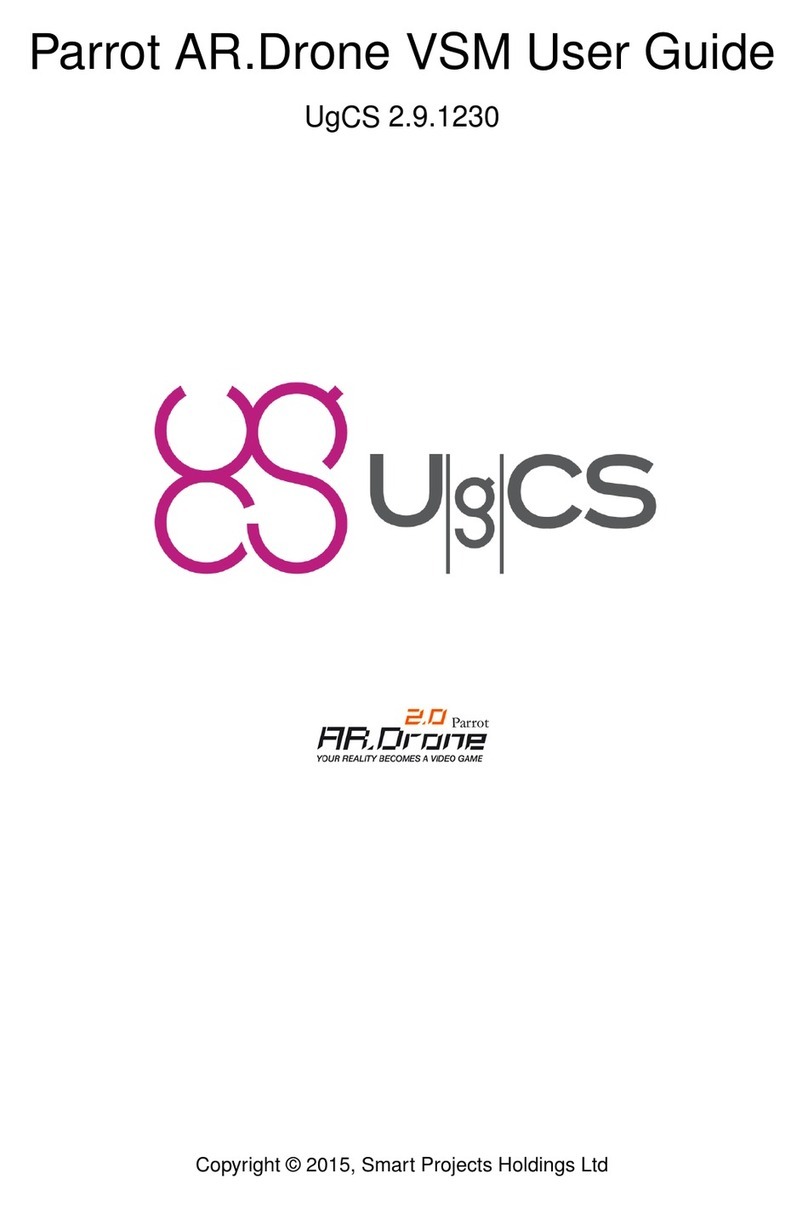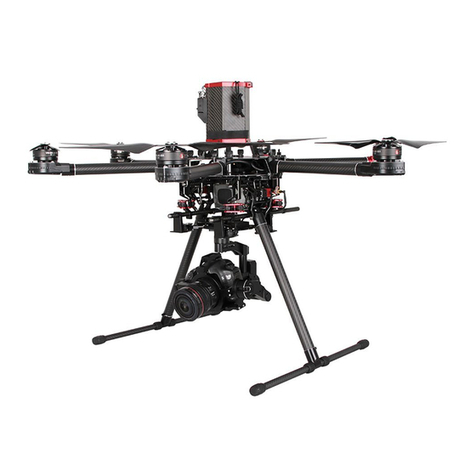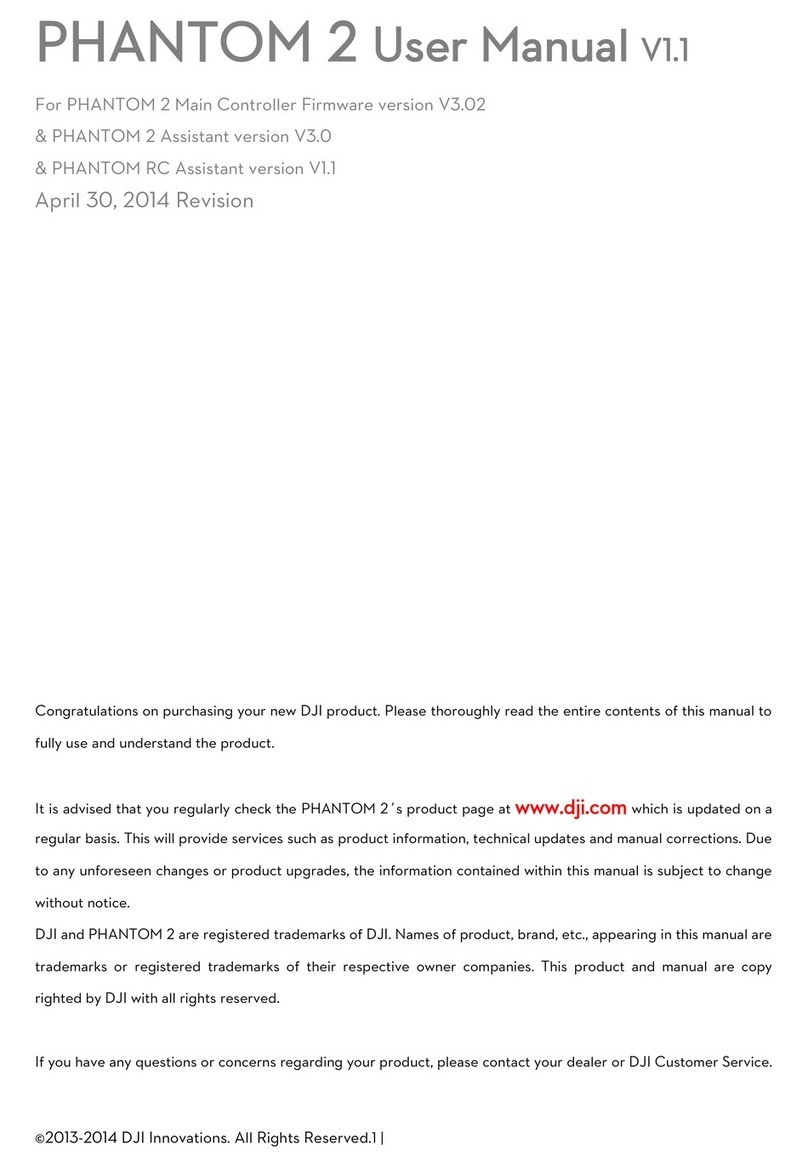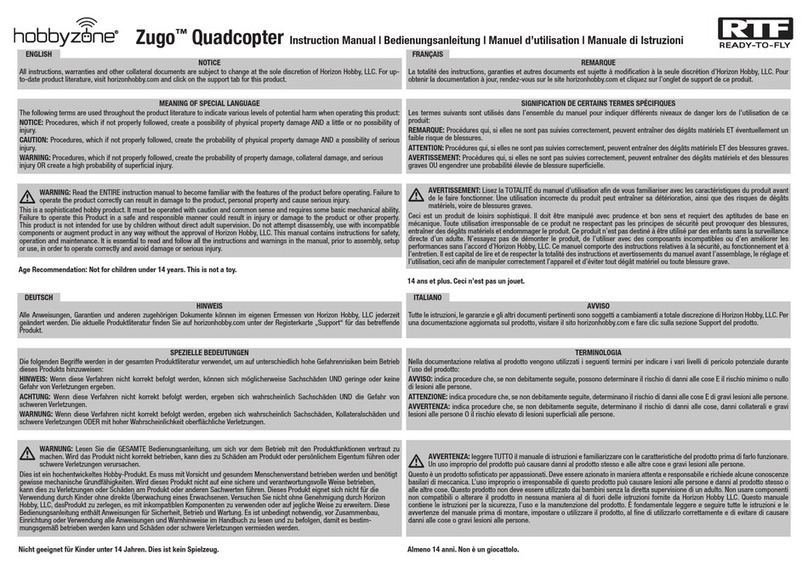
INNOVATION & TECHNOLOGY
REV 1
Persons, including children, with reduced physical, sensory or
mental capabilities, or lack of experience or knowledge, or not
capable to use safely this product, must not use it without
supervision or instruction by an experienced and responsible
person.
The operation of radio controlled models must be learned! If
you have never used such a model, then start extra carefully
and make sure to be familiar with the reactions of the model
to the remote control commands. Proceed responsibly.
Always perform a range test and function test on the ground
(secure the model tightly) before your model is used. Repeat
the test with the motor running and with short bursts of
throttle.
Before you start using the remote control model, you have to
check any relevant laws and regulations. These laws must be
always obeyed. Pay attention to the possibly different laws of
the countries.
The insurance is mandatory for all kinds of model operation. If
you already have one check out whether the operation of the
model is covered. If applicable, extend it to special model
liability insurance. We recommend to provide the multicopter
with a label, where are indicated the name, address, tel. n., E-
mail and Insurance n. So that the multicopter can be clearly
assigned in the event of a crash.
For safety and (CE) certification the unauthorized conversion
and / or modification of the product is not permitted.
They may only be used with our recommended components
and accessories. Use only genuine matching Graupner
connectors of the same design and the same material.
Make sure that all connections are secure. Do not pull on the
cables when you unplug the connector.
Protect the model and receiver from dust, dirt, moisture and
other foreign parts. Do not expose this equipment to vibration
and excessive heat or cold. The remote control operation may
range from -10 ° C to +55 ° C.
Use all HoTT components only with the latest software and
firmware releases.
If any questions arise that cannot be ascertained with the help
of the operating manual, please contact us.


